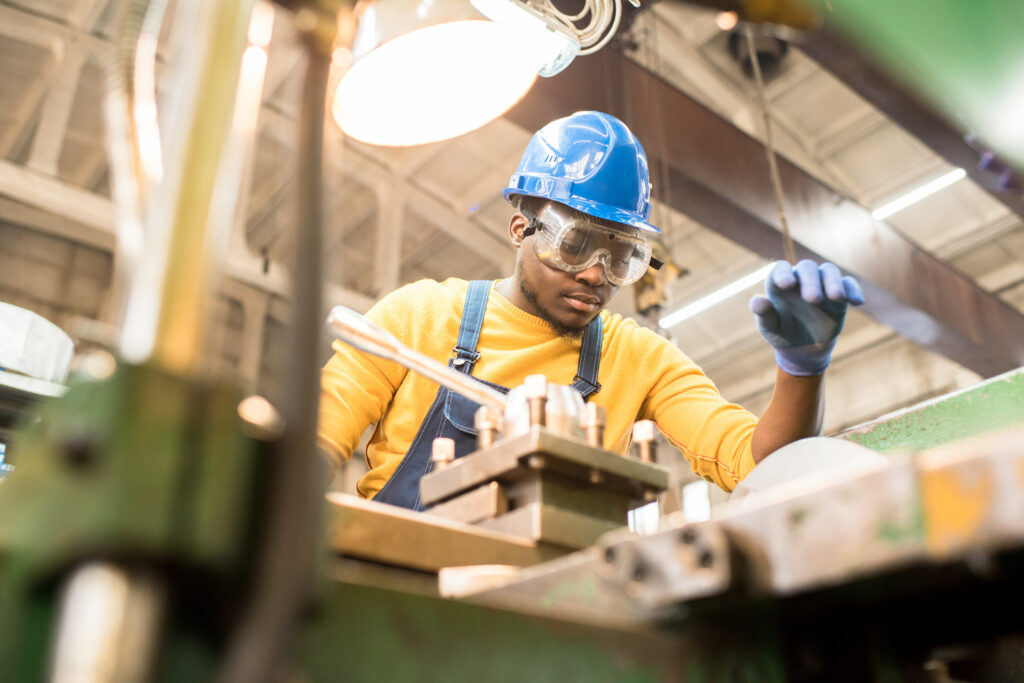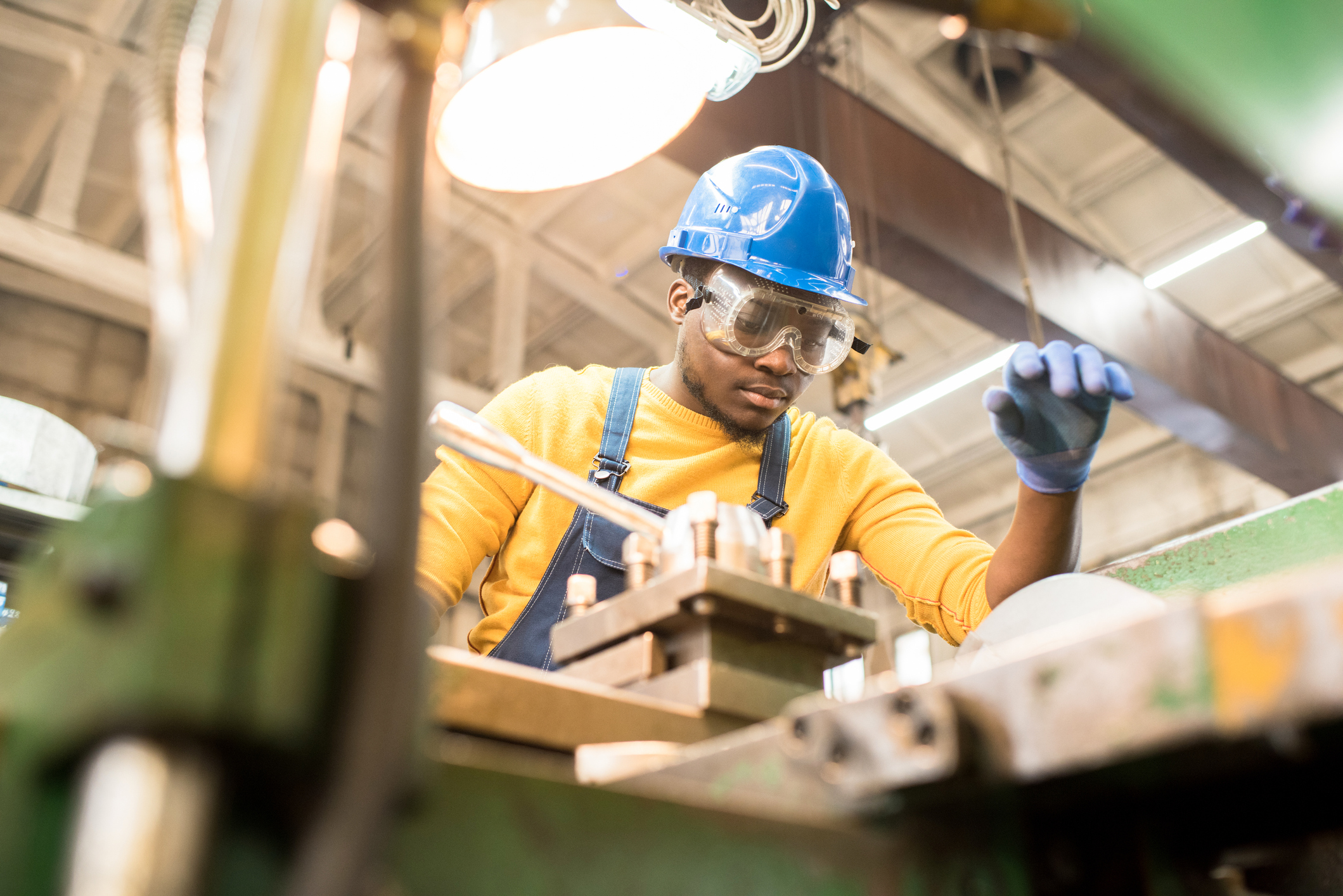Looking for information about safety programs for manufacturing? Want to improve manufacturing safety in your organization and facilities?
You’ve come to the right place. KPA has the insights, software, training, and consulting services you need to save lives and money and ensure compliance with the Occupational Safety and Health Administration and other regulatory authorities. We’ll help you streamline and automate your workforce safety and compliance processes, so you can identify and remedy issues before incidents happen.
It all starts with your manufacturing safety program.
What Is a Manufacturing Safety Program?
A safety program is everything an organization does to keep people safe, healthy, and productive at work. It encompasses policies, procedures, training, tools, reporting, and various other functions, activities, and controls meant to prevent workplace injuries and illnesses.
An effective manufacturing safety program is more than a collection of paperwork and policies kept in a binder. It should function as a playbook for how, when, where, and why people work. It needs to be embedded in every one of the organization’s business processes.
In other words, safety can’t be thought of as something separate from other industrial and production processes. It has to be your #1 goal at all times. Just as machines need to be operational, people need to be able to work unharmed. Your manufacturing safety program ensures that your workforce stays protected at every level, every moment of every day.
As such, your manufacturing safety program is also an essential line of defense against lost revenue and productivity, regulatory penalties, legal issues, and other risks that directly impact your bottom line. OSHA expects you to have a safety program in place, and if you don’t—or if your program isn’t working as intended—you can expect to pay 5–6 figures or more.
Keep in mind that those are only the direct costs. The indirect costs are far greater. In fact, according to OSHA, workplace safety issues cost employers as much as $151 billion per year.
Read more about why safety in manufacturing is so important.
What Does a Manufacturing Safety Program Cover?
Your manufacturing safety program protects your workers from countless health and safety risks, and your leadership from just as many legal and financial liabilities.
An effective safety program for a manufacturing company spells out proper procedures for…
- equipment and machinery operation
- machine guarding
- lockout/tagout
- forklift operation
- hazard communication and chemical safety
- personal protective equipment use, testing, and maintenance
- respiratory protection
- cleaning and sanitizing
- emergency response
- waste and hazardous materials disposal
- fire prevention
- incident reporting and recordkeeping
- safety audits and inspections
- workforce training
…and much more.
(Are you doing everything you can to avoid OSHA’s top 5 most frequent manufacturing safety violations? Find out.)

Ideally, a manufacturing safety program is a continuous cycle. It begins with a thorough evaluation of current processes and controls, followed by corrective and preventive actions, and then updates to paperwork, training, and regulatory materials. The organization then reviews its updated safety data and analytics to look for any problems or gaps, and the cycle starts anew.
To learn the basics of manufacturing safety and compliance, and find a checklist you can use to assess your program’s effectiveness, click here.
The Link Between Your Manufacturing Safety Program and Your Safety Culture
Manufacturing safety sounds like a no-brainer for everyone. No worker wants to work in an unsafe environment. No public official wants to spend agency time and resources investigating and litigating preventable accidents. No employer wants to deal with the myriad costs associated with safety issues.
And yet accidents occur. People get hurt, regulators get involved, and companies get in trouble.
It isn’t for lack of trying. More often than not, the organization at the center of the incident had some kind of manufacturing safety program in place. The problem is that what’s on paper doesn’t always reflect reality. Policies do not always become practices. People don’t always do what they’re supposed to do, even when they know they should.
That is to say: a safety program is not the same as a safety culture.
This is maybe the greatest challenge in creating and maintaining a safe workplace. It all comes down to culture—and culture is notoriously difficult to define and control. You can’t just make it happen. You can’t write it into being. There’s no “culture button” you can push. Culture isn’t fixed, tangible, or knowable the way a program is. It’s a force, and a largely invisible one; pretty much the only time you can see it is when something goes wrong.
Or so it seems. The truth is that any culture is ultimately a collection of habits. By understanding and targeting workers’ and leaders’ habits, any organization can expose unsafe behaviors, adopt new ones, and establish a true safety culture.
“I knew I had to transform Alcoa. But you can’t order people to change. So I decided I was going to start by focusing on one thing. If I could start disrupting the habits around one thing, it would spread throughout the entire company.” –Paul O’Neill, former CEO, Alcoa
Alcoa is one of the world’s largest aluminum producers. It’s also one of the world’s safest companies. That didn’t happen by chance.
Model your manufacturing safety program on the best—learn how Alcoa and two other leading companies optimized their safety programs.
Manufacturing companies throughout the United States rely on KPA’s safety and compliance solutions to minimize risk and maximize productivity.
Shift your attention away from manual processes and focus instead on creating and maintaining a culture of safety using Vera EHS, our all-in-one software solution for manufacturers. You’ll spend less time on paperwork, spreadsheets, and reporting, and more time in the field with your team—conducting inspections and audits, holding safety meetings, and training employees.
It’s all backed by the manufacturing industry’s #1 library of safety training courses, along with on-demand consulting services, available on-site and online.
Improve your manufacturing safety program—and save money—with KPA. Request a demo.

